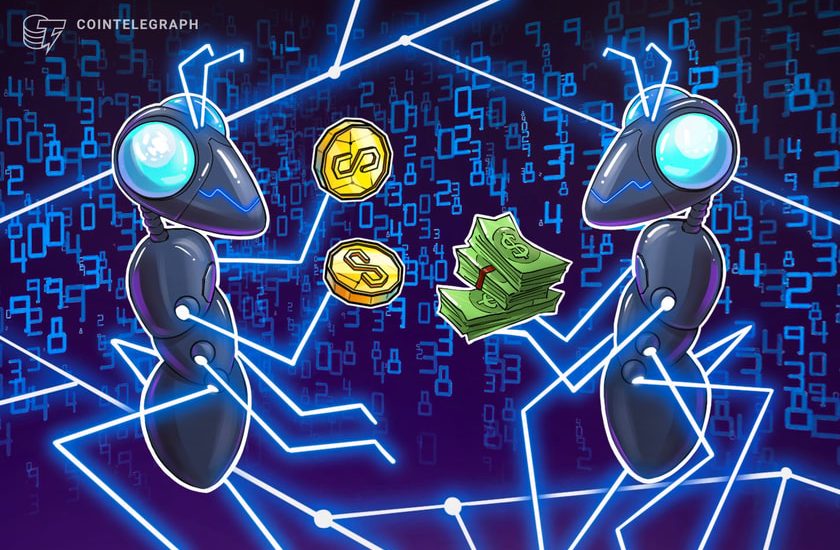- June 9, 2023
- Posted by: admin
- Category: BitCoin, Blockchain, Cryptocurrency, Investments


The growth of DeFi has happened in spite of the CEXs’ stranglehold, with users relying on non-custodial wallets to access even the most basic of DeFi products.
Centralized exchanges have been the dominant force on the cryptocurrency landscape for over a decade, acting as the primary method of transferring value between blockchains and serving as a gateway into crypto for the masses. They have been instrumental in the early development of the nascent crypto sector, with many reaping substantial profits. Binance’s revenue, for example, hit $12 billion in 2022, a ten-fold increase in just two years.
However, the success of centralized exchanges has come at a cost. Not only has their dominance placed an unnecessary financial burden on users, but I would argue that the custodial nature of CEXs has hindered the development of the Web3 ecosystem. The growth of DeFi has happened in spite of the CEXs’ stranglehold, with users relying on non-custodial wallets to access even the most basic of DeFi products.
Fortunately, the shift from centralized exchanges to DEXs is gaining momentum. In the immediate aftermath of the SEC’s crackdowns on Binance and Coinbase, DEX trading volumes surged 444%. Even without such seismic events, users are increasingly seeing the value of DEXs. Uniswap trading volume has consistently outpaced that of Coinbase so far in 2023 before the SEC formally announced proceedings against the centralized exchange.
As crises continue to engulf centralized exchanges, the pendulum is increasingly swinging towards its decentralized counterparts. While CEXs remain dominant in terms of market share — for now — the growing interest in DEXs has, in my opinion, the great potential to upend the status quo and open up the full potential of the Web3 economy.
The DEX Opportunity
The collapse of FTX may have represented a low point for centralized exchanges, the culmination of years of questionable practices and declining trust. Ongoing criminal investigations, as well as the SEC’s continued probing into the likes of Binance and Coinbase, are only exacerbating the situation.
Against this backdrop, users are increasingly drawn to the transparent, trustless approach of DEXs. Even before the FTX saga, Uniswap had been diverting daily volume away from centralized exchanges, starting with ERC-20 token swaps.
The groundwork has clearly been laid for significant upticks in the use of DEXs. Despite this, on-chain trading beyond Uniswap and ERC-20 tokens has, so far, struggled to gain traction.
Join the community where you can transform the future. Cointelegraph Innovation Circle brings blockchain technology leaders together to connect, collaborate and publish. Apply today
Cross-chain experiences are still in their infancy and have been hampered by issues such as low liquidity, poor user experience and market fragmentation. Addressing these challenges — which cross-chain aggregators are working on currently — will be key to accelerating the shift to DeFi. Effective on-chain BTC markets are sure to bring billions in monthly volume to the sector when done well.
As cross-chain technology matures, users will recognize that a DEX world may offer exactly what they’re looking for: secure, transparent and user-friendly transactions, without the need to trust a centralized entity. There is no reason why the Uniswap Effect cannot be replicated in most crypto spot markets, echoing the 2020 ERC-20 token swap revolution.
Capitalizing on the opportunity
Since 2020, many new DEXs have come and gone. The automated market maker (AMM) concept has led to the development of many complex markets involving stablecoins, liquidity provision, yield farming and many more alongside the simple concept of swapping tokens. Breaking into the DeFi market has become much more challenging with so many products competing for attention and liquidity.
In 2023, the landscape cares far less about liquidity than it once did. The focus of any new DeFi product, but especially a DEX, is having a competitive edge for end users, with pricing and gas fees being the two most important factors for swappers given the dominance of aggregation rising by the day. End users drive volume and fees, which in turn drive liquidity.
It is a common error to assume that liquidity will just be there. What we’ve seen is that without a compelling reason for traders to use a platform, liquidity will eventually disappear. All new DEXs should ask themselves the crucial question: What can we do to make this protocol useful to Web3 users sustainably? Without answering this, any early incentives used to pump liquidity will simply dry up and protocols are then faced with the realities of the competitive landscape.
What does the future hold?
As we approach the latter half of 2023 and beyond, users will likely be surprised by the pace at which swapping experiences are improving. With the ongoing evolution of cross-chain swapping, centralized exchanges will have to work harder to attract and retain users — and this will be increasingly difficult where DeFi exchanges are safer, cost-competitive and entirely transparent. The embedded trust of decentralization will be an added bonus.
After all, trading volume is fickle and will naturally flow to where the best user experience and value lie. Uniswap has already proven that on-chain trading can be a compelling alternative to the status quo. The industry must now work at pace to unlock this technology’s full potential, and as it does, the momentum of the shift from centralized exchanges to DEXs will only continue to strengthen.
Simon Harman is the CEO and Founder of Chainflip Labs, a cross-chain decentralized exchange set to launch in mid-2023.
This article was published through Cointelegraph Innovation Circle, a vetted organization of senior executives and experts in the blockchain technology industry who are building the future through the power of connections, collaboration and thought leadership. Opinions expressed do not necessarily reflect those of Cointelegraph.
Learn more about Cointelegraph Innovation Circle and see if you qualify to join
